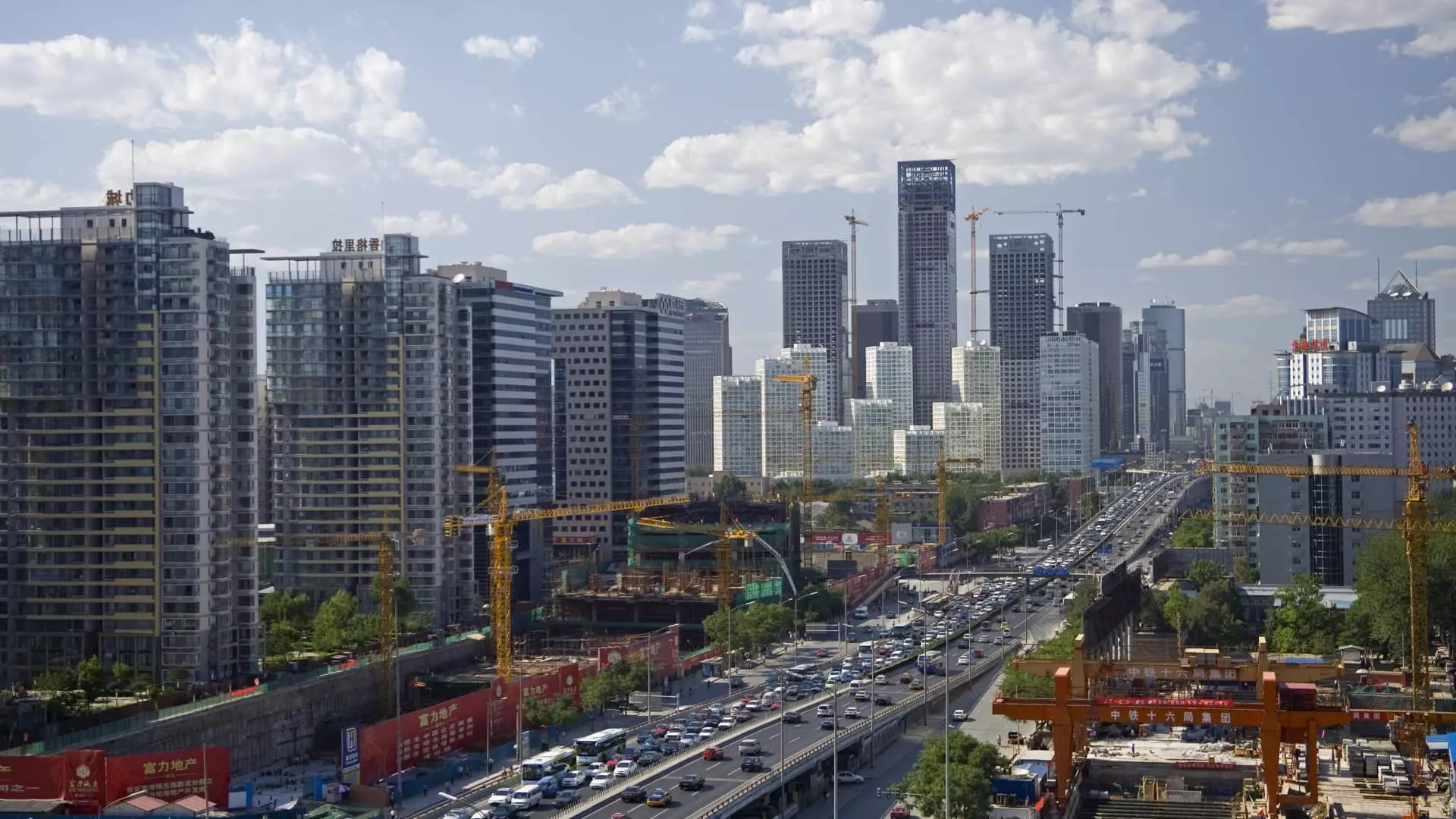The Chinese economy has reportedly experienced a surprising surge, expanding by 5.4% in the first quarter of 2023. While this figure surpasses analysts’ expectations that hovered around 5.1%, it paints a picture that may gloss over deeper underlying issues. The moderate optimism exuded by the statistical bureau, which describes the economy as “off to a good and steady start,” could be interpreted as overly simplistic in light of the external pressures posed by escalating tariffs from the United States.
It’s essential to recognize that this growth does not occur in a vacuum. It is buoyed by a series of stimulus policies initiated at the end of 2024, ostensibly to shore up consumer and industrial activity. Nevertheless, the data presents a bifurcated narrative—yes, we see substantial increases in retail sales and industrial output, but the shadow of geopolitical tension looms large. Retail sales rose by an impressive 5.9%, while industrial output surged by 7.7%; however, these numbers might encourage a dangerously optimistic viewpoint in light of contradictory trends manifesting in fixed asset investment, particularly within real estate.
The Real Estate Conundrum
A troubling aspect of the current economic landscape is the ongoing decline in real estate investment, which has fallen by a staggering 9.9% year over year. This decline suggests a sector grappling with fundamental weaknesses that could have ripple effects throughout the broader economy. The inability of the housing market to stabilize is alarming and reveals vulnerabilities that could undermine consumer confidence and overall economic stability.
When the government focuses on infrastructure and manufacturing as the new engines of growth, one must ask whether this shift can truly compensate for the commercial challenges in real estate. Are we witnessing an economic transformation, or merely a patchwork of policies designed to alleviate immediate concerns? The central government’s push towards innovation, represented by local success stories like the artificial intelligence startup DeepSeek, provides a glimmer of hope, but this seems insufficient against a backdrop of deteriorating consumer sentiment and industrial pressures.
The Tariff Time Bomb
Amid this backdrop of seemingly positive growth figures lies a more complex scenario—with looming uncertainty due to the ongoing trade war with the United States. The tit-for-tat tariff actions have created a precarious situation wherein the total U.S. tariffs on Chinese goods have now reached a staggering 145%. Such levels of taxation not only threaten trade relations but are expected to pull down the entire economy, potentially leading to a growth forecast as bleak as 3.4% in 2023, according to UBS Group.
Morgan Stanley has offered particularly gloomy predictions, suggesting that rapid growth could unravel significantly by the second quarter. The ideological rift between China and the United States raises the question: will diplomatic resolution be achievable, or are we destined for prolonged economic tensions? The warning from economists about the delay in negotiating an end to these escalated tariffs reflects a rift that could deepen as both nations stand their ground.
The Call for Proactive Policies
The central government faces an urgent need to implement proactive macroeconomic policies to stimulate domestic consumption and lessen reliance on vulnerable export-driven sectors. As domestic demand shows signs of faltering—an issue emphasized by economic analysts—it becomes an imperative for Chinese officials to act decisively. The announcement of potential monetary easing, including interest rate cuts and increased fiscal stimulus, indicates a government on the defensive, grappling with complexities that mirror the economic intricacies of the West.
Investors and consumers alike seek stability but are met with ambiguity, leading to hesitance to invest and spend. While potential new fiscal measures worth 1 to 1.5 trillion yuan signal a response to this uncertainty, one has to wonder whether such amounts are sufficient to counter the fundamental issues that have led us to this juncture.
A Bleak Horizon?
As we dissect the optimistic veneer presented by recent GDP growth figures and buoyant retail sales, we must remain vigilant. The stark reality is that these gains may not be sustainable if the outward factors, primarily the trade tensions and domestic consumption weaknesses, are not adequately addressed. The Chinese economy stands at a precarious crossroads, flanked by the promise of innovation and the specter of economic malaise. In these turbulent times, optimism must be tempered with realism, lest we find ourselves lulled into complacency by inflated growth expectations that ultimately crumble against the forces of geopolitical and domestic unrest.


Leave a Reply